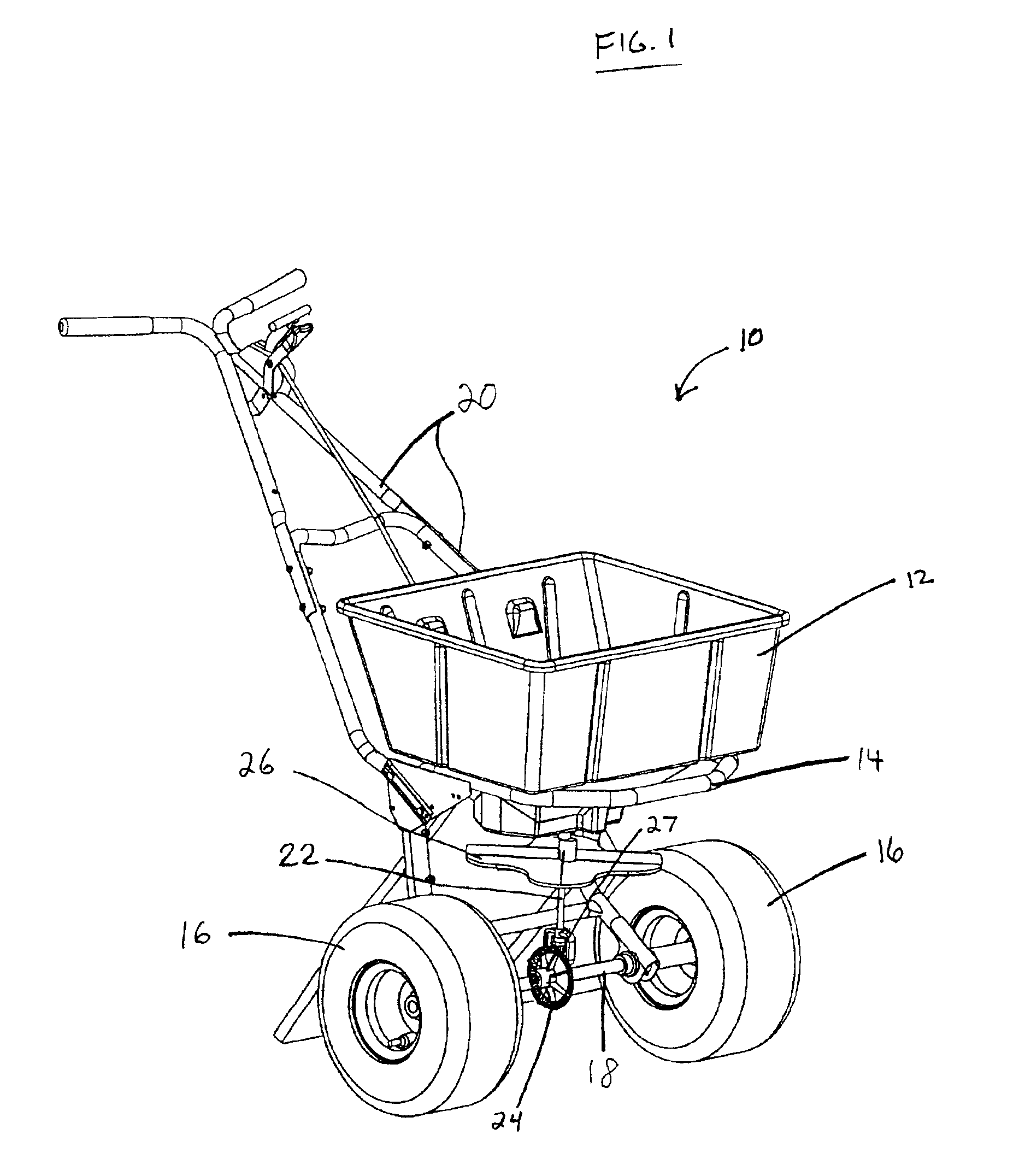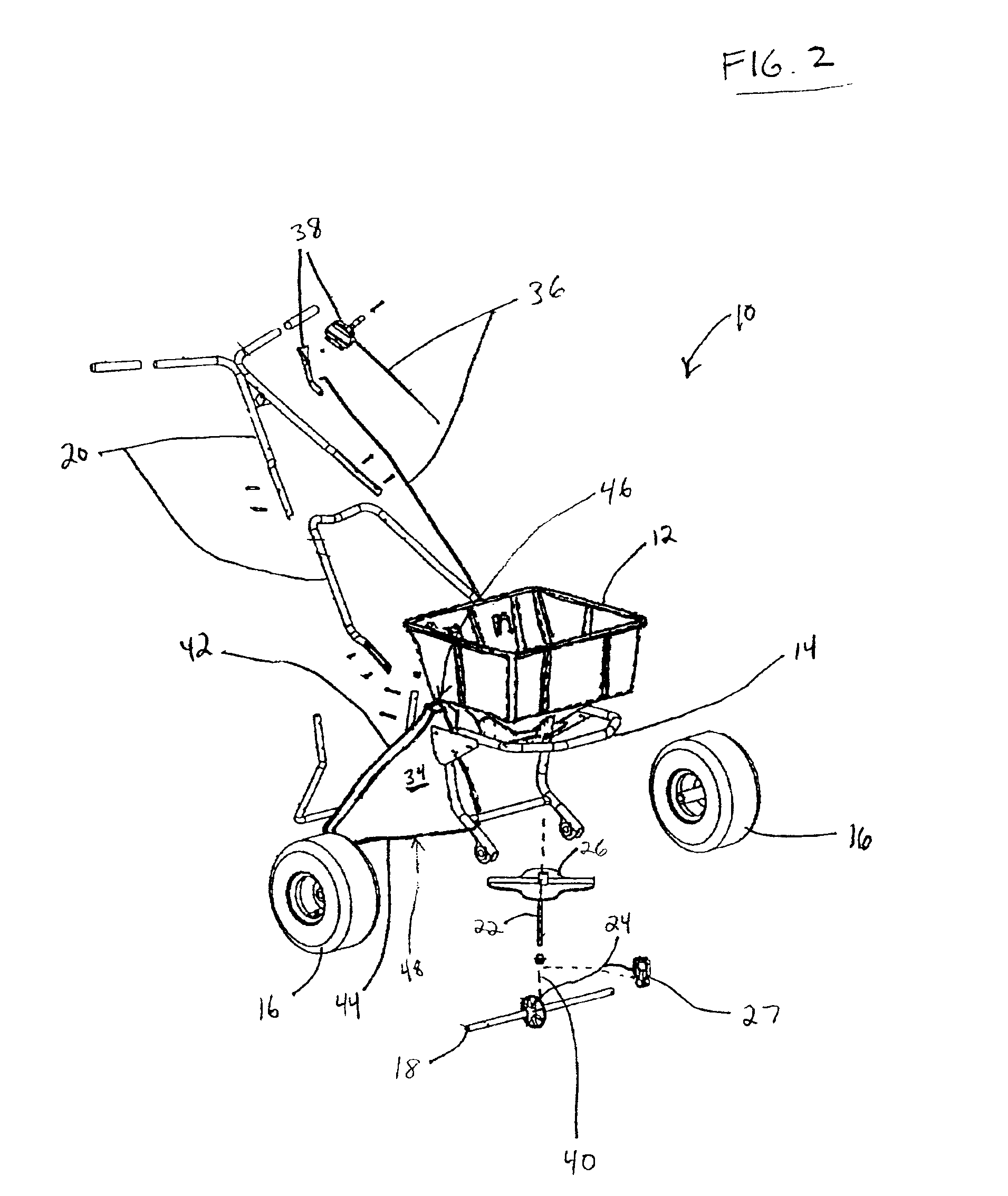Dual mode spreader
a spreader and dual-mode technology, applied in the field of devices, can solve the problems of numerous application problems, lack of control of the “feathering” effect or distribution pattern, and inability to achieve uniform distribution pattern
- Summary
- Abstract
- Description
- Claims
- Application Information
AI Technical Summary
Benefits of technology
Problems solved by technology
Method used
Image
Examples
Embodiment Construction
[0022]Referring now to the drawings, the preferred embodiment and best mode of a dual mode spreader, generally designated 10, is shown in FIG. 1. As best shown in FIG. 2, the spreader 10 comprises a hopper 12, for holding a supply of spreadable material, mounted to a frame 14. Frame 14 is connected to a pair of ground-engaging wheels 16 via axle 18. Frame 14 is also connected to handle 20 to enable a user to manually propel the hopper 12 over a selected ground area by rolling the wheels 16 along the ground.
[0023]The dual mode spreader is preferably made almost entirely of molded plastics so as to be generally lightweight, corrosion resistant, durable, and easy to manufacture, transport and assemble. It is understood, however, that any appropriate materials can be used to construct any of the structures of the spreader 10.
[0024]One or both wheels 16 are fixedly connected to axle 18 for transmitting power to vertical shaft 22 by means of a first bevel gear 24 fixedly mounted on axle 1...
PUM
 Login to View More
Login to View More Abstract
Description
Claims
Application Information
 Login to View More
Login to View More - R&D
- Intellectual Property
- Life Sciences
- Materials
- Tech Scout
- Unparalleled Data Quality
- Higher Quality Content
- 60% Fewer Hallucinations
Browse by: Latest US Patents, China's latest patents, Technical Efficacy Thesaurus, Application Domain, Technology Topic, Popular Technical Reports.
© 2025 PatSnap. All rights reserved.Legal|Privacy policy|Modern Slavery Act Transparency Statement|Sitemap|About US| Contact US: help@patsnap.com



